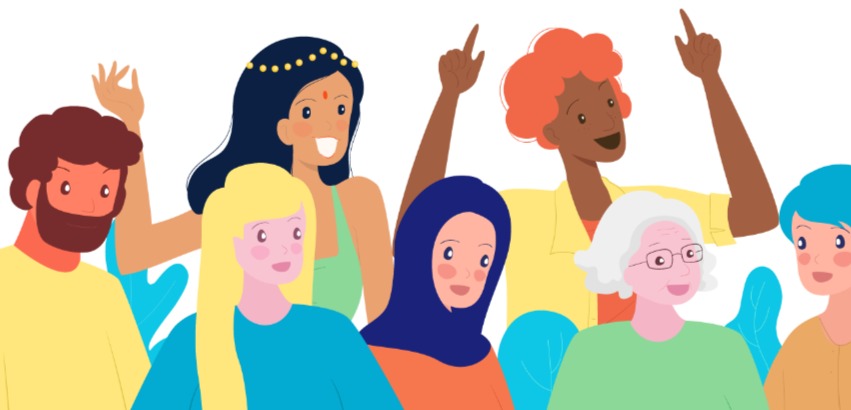Introduction:
In the complicated embroidered artwork of human society, certain bunches frequently discover themselves marginalized, consigned to the borders, and hooking with the complexities of personality. One such gathering, the Maslaaseen, envelops a different cluster of people whose encounters with marginalization are profoundly interwoven with different social, financial, and political components. Investigating the concept of Maslaaseen requires digging into the nuanced flow of control, benefit, and separation that shape their lived realities.
Defining Maslaaseen:
The term “Maslaaseen” begins from Arabic, freely interpreted as “marginalized” or “impeded.” Be that as it may, its scope amplifies past an unimportant etymological definition. Maslaaseen typifies people and communities who confront systemic obstructions to their full support in society, due to variables such as ethnicity, religion, sex, or inability. These marginalized bunches frequently involve crossing shapes of abuse, compounding their marginalization and rendering them helpless to segregation and exclusion.
Understanding Intersectionality:
Central to the concept of Maslaaseen is the idea of intersectionality, coined by lawful researcher Kimberlé Crenshaw. Intersectionality recognizes that people hold different social personalities and that these characters cross to shape their encounters of benefit and persecution. For Maslaaseen, intersectionality highlights the compounding impacts of marginalization stemming from different tomahawks of character. For occurrence, a destitute lady from an ethnic minority bunch may confront unmistakable shapes of separation compared to a well-off man from the overwhelming social majority.
Factors Contributing to Marginalization:
Maslaaseen includes a differing extent of marginalized bunches, each confronting interesting challenges established in verifiable, social, and financial settings. Financial disparity stands as a critical driver of marginalization, with devastated communities regularly missing access to instruction, healthcare, and financial openings. Also, systemic segregation based on variables such as race, ethnicity, religion, caste, or sex advances compound social prohibition and limits upward versatility for Maslaaseen populations.
The Part of Basic Injustice:
At the heart of Maslaaseen’s marginalization lies basic bad form, settled in inside societal education and maintained by unequal dissemination of control and assets. These auxiliary imbalances propagate cycles of destitution, disappointment, and constrained social versatility for marginalized communities. In addition, unfair approaches and hones sustain systemic predispositions and assist in settling in Maslaaseen in cycles of marginalization.
Challenges Confronted by Maslaaseen:
The challenges standing up to Maslaaseen are multifaceted and profoundly settled. Financial aberrations show in unequal get to to instruction, healthcare, and work openings, propagating cycles of destitution and restricting social portability. Social segregation, established in generalizations and biases, advance marginalizes these communities, ruining their capacity to completely take an interest in social, social, and political circles. In addition, basic boundaries such as the need for lawful assurances and insufficient representation compound the powerlessness of Maslaaseen populations.
Resilience and Resistance:
Despite confronting impressive challenges, these communities illustrate versatility and resistance in the confront of misfortune. Grassroots developments, community organizing, and backing endeavors play a pivotal part in intensifying the voices of marginalized bunches and challenging systemic treacheries. By cultivating solidarity and mobilizing for collective activity, Maslaaseen communities endeavor to disassemble onerous structures and advocate for social equity and equality.
FAQ (Habitually Inquired Questions) for “maslaaseen”:
What is “maslaaseen”?
It is an Arabic term that refers to “displaced people” or “uprooted individuals.” It alludes to people or bunches who have been constrained to take their homes due to different reasons such as struggle, mistreatment, or characteristic disasters.
Who are the “maslaaseen”?
The “maslaaseen” envelops an assorted gathering of individuals from diverse foundations, ethnicities, and nationalities who have been uprooted from their homes.
What causes individuals to become “maslaaseen”?
People have gotten to be “maslaaseen” due to an assortment of reasons including equipped struggle, mistreatment based on ethnicity, religion, or political convictions, characteristic fiascos such as seismic tremors, surges, and storms, as well as financial hardship and poverty.
Where do “maslaaseen” look for refuge?
It regularly looks for asylum in neighboring nations or districts that are seen as more secure or more steady. They may moreover look for refuge in nations that are signatories to universal outcast conventions.
What challenges do “maslaaseen” face?
It confronts various challenges including the need to get to fundamental necessities such as nourishment, clean water, shields, and healthcare. They too regularly experience segregation, dialect boundaries, and lawful obstacles in their nations. Furthermore, they may battle with injury, the misfortune of jobs, and instability in their future.
How can I offer assistance “maslaaseen”?
There are a few ways to offer assistance including giving to trustworthy helpful organizations that give help and help to outcasts, volunteering your time and aptitudes, raising mindfulness around their situation, and pushing for arrangements that bolster outcast rights and protections.
Is there trust for “maslaaseen” to return home?
The prospect of returning domestically may change depending on the circumstances of relocation. Endeavors such as peacebuilding, struggle determination, and feasible advancement can contribute to conditions conducive to the return of “maslaaseen” to their homes. In any case, accomplishing solid arrangements for uprooting frequently requires long-term commitment and participation from governments, universal organizations, and nearby communities.
Conclusion:
In understanding Maslaaseen, we stand up to the stark substances of marginalization and the significant effect of crossing shapes of persecution on people and communities. Recognizing the complexities of Maslaaseen’s encounters requires an all-encompassing approach that addresses the basic shameful acts supporting their marginalization. By intensifying their voices, challenging systemic imbalances, and cultivating comprehensive social orders, we can endeavor towards a more evenhanded future where all people, not with the standing of their foundation, can flourish and fulfill their potential.



